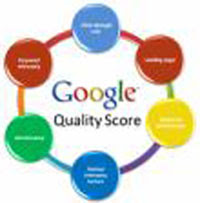I have been chatting to a bunch of people recently who are setting up websites in Word Press and want to know which plug-ins I use. So to save me having to list them out every time someone asks, here’s a post that lists my Top 5 Plug-ins for SEO. Of course there’s plenty more out there, but these are the ones that fall into my “Must Have” SEO plug-in list.
All-in-One SEO Pack: This is the top plug-in that any half decent SEO specialist will recommend for WordPress. It literally works straight out of the box (metaphorically) and is easy enough for beginners while giving more experienced SEO practitioners enough options to refine their approach. The plug-in provides a range of handy SEO functions which include auto page titling and meta data, avoid common duplicate content issues, navigational link management and more.
Google XML Sitemaps: Sitemaps are a proven tool in improving a sites indexing performance in Google, Yahoo! and Bing. This handy plugin creates the XML sitemap automatically and alerts search engines when new content is created. It also creates a priority for your posts based on the number of comments it receives saving you the time of adjusting them manually.
SEO Smart Links: Internal linking within a website or blog can have a dramatic impact on rankings. This plug-in does the hard work for you – identifying specific search terms within your website and linking them to relevant pages or content.
SEO Friendly Images: How often do website owners forget to add “alt tags” to their images? Given they’re a proven way to boost the keyword density of content, this plug-in ensures you don’t miss an opportunity with any of your images.
Redirection: Websites are constantly evolving. Changing pages and removing content is an ongoing part of this process. The redirection plug-in helps you manage your website’s page redirects ensuring URLs don’t end up on 404 pages and more importantly so that you can ensure the link juice for discontinued pages is redirected elsewhere.
There is some other great plug-ins for pulling in relevant content, adding tags and leveraging your comments, plus much more – but as a bare essential, every word press website or blog should have five plug-ins I have listed above to boost its SEO performance.
If you have any other essential SEO wordpress plugins you use, share them below.
Source: ineedhits.com

